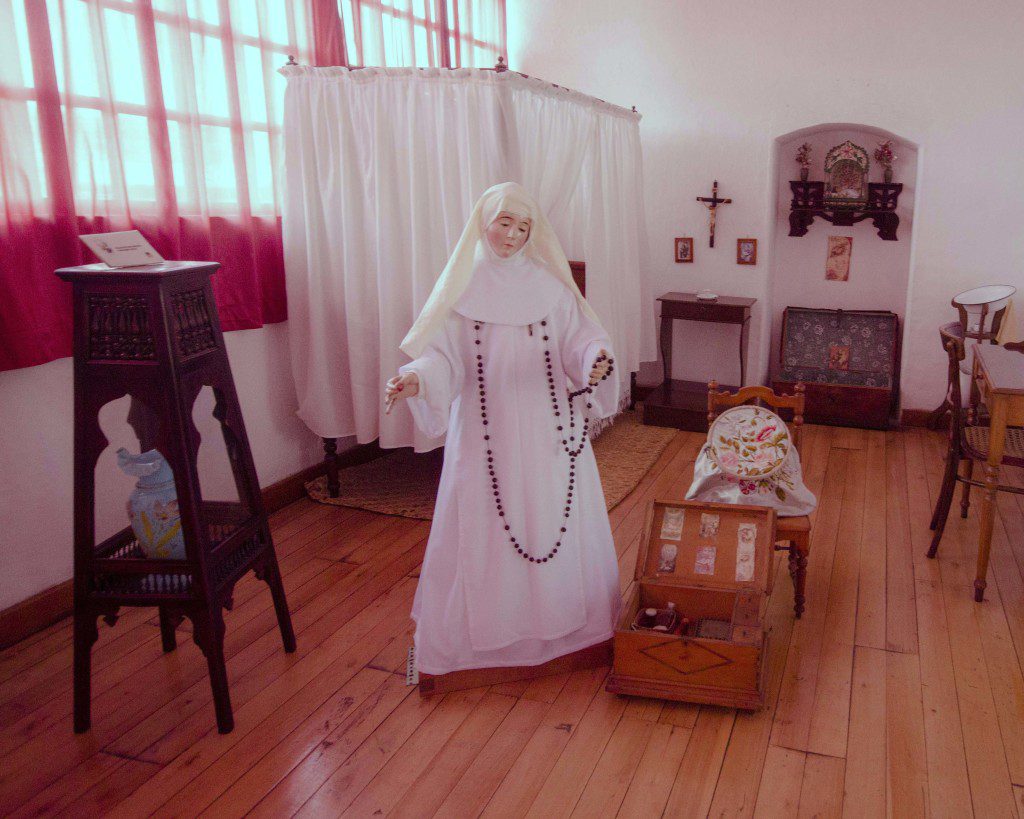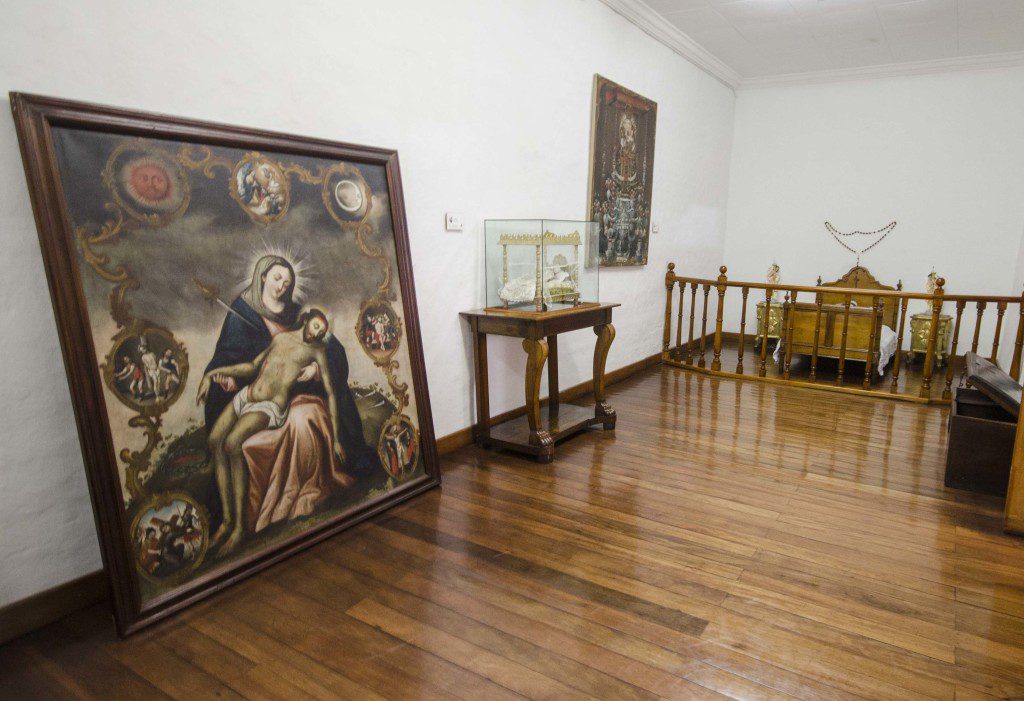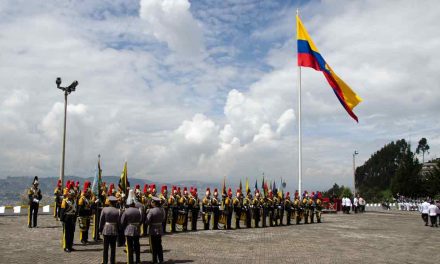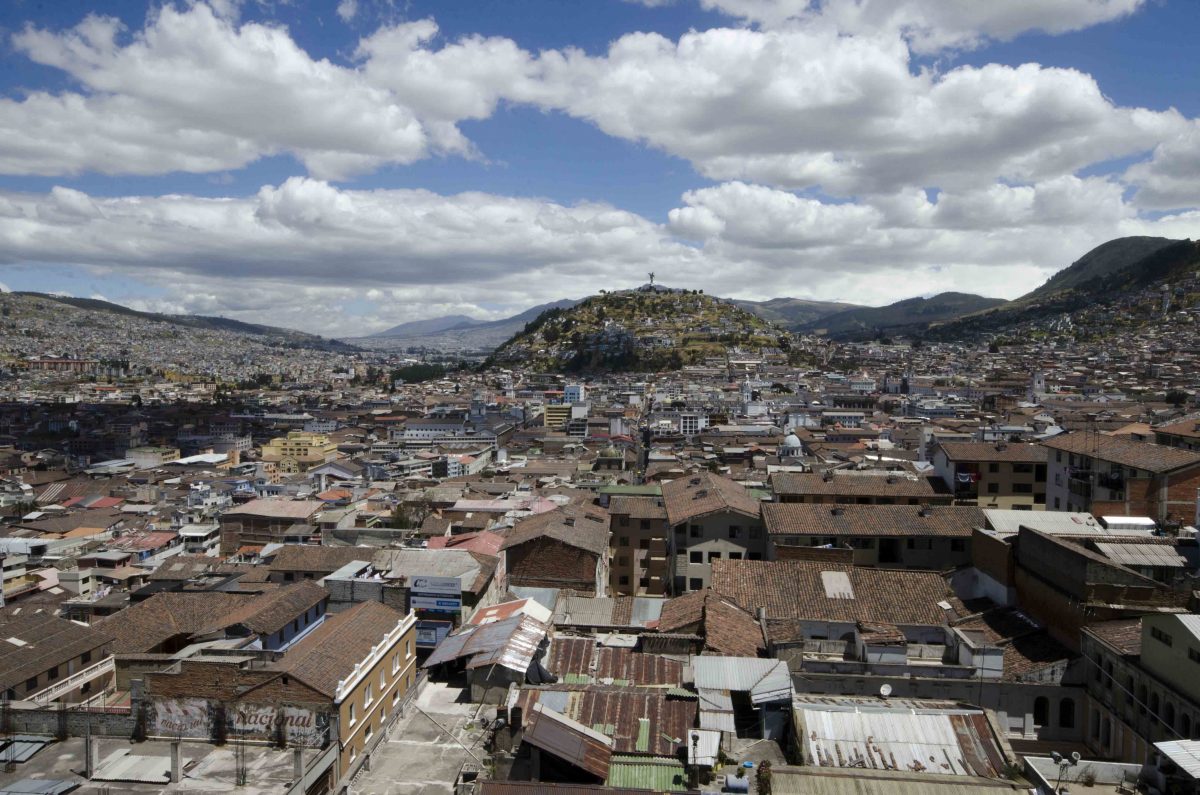As responsible travelers evolve, so do the stories we share.
This article is part of our living archive — trusted content we continue to care for.
First published on April 12, 2015 • Last updated on May 9, 2017.
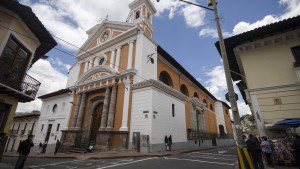 Not far from the Grand Plaza near the Presidential Palace in Quito, you’ll find a church like no other. It exterior walls are painted a terracotta orange with architectural details painted in white. Only the four columns in front remain the purply gray color of cut blocks of natural mountain stone. The church has a history back to the late 16th century when it replaced an ancient Incan site, the Temple of the Virgins of the Sun. It seems one nunnery replaced another.
Not far from the Grand Plaza near the Presidential Palace in Quito, you’ll find a church like no other. It exterior walls are painted a terracotta orange with architectural details painted in white. Only the four columns in front remain the purply gray color of cut blocks of natural mountain stone. The church has a history back to the late 16th century when it replaced an ancient Incan site, the Temple of the Virgins of the Sun. It seems one nunnery replaced another.
When this religious community was first founded, girls as young as six years old came to live here and prepare for sisterhood. Because of their young age, they often brought small toys with them and a small collection can be seen in the museum. Some of the playthings are made from real silver, attesting to the wealth of the families that sent them. Each family also gifted a vase, often from a foreign country to attest to its worth, and the collection is a point of pride. However, a grotto diorama filled with little items gifted by each nun is a truer and more honest example of their faith. It includes a small donation from every sister since the foundation of the monastery except for the newest novitiate. When she arrived, the diorama had been protected by a glass case that was not designed to be opened.
These Dominican nuns practice three types of silence. The first is absolute, where no words can be exchanged at all. The second is a practical silence where one might ask a fellow nun to pass a needle or cut a piece of thread in order to accomplish the work of the day. The third is the breaking of silence and takes place for one hour during lunchtime but the words exchanged can only refer to the works of God.
Today, the Dominican sisters who live this cloistered life are mainly senior citizens and no longer produce the artwork of past years. They were once known for embroidery of religious vestments in gold and silver thread as well as intricate metalwork in silver and artificial flowers made from fabric coated in aluminum and then molded in presses. Many examples of their beautiful artistry can be seen in the small museum.
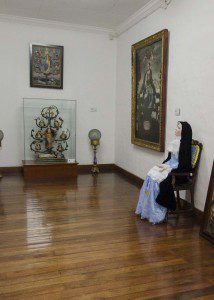 The guides are very knowledgeable and if you love religious art, this collection is worth a visit. Not every painting is excellent but a few are exquisite, like the Virgin of Quinche completed by an artist of the Cusco School. There is also a collection of Christs on the Cross that show the differences between the School of Cuenca, whose images of Christ show two feet nailed to the cross separately and are painted in matte colors, and the School of Quito, whose images of Christ have a brilliant shine from being buffed by pieces of leather. Other highlights include La Virgin de Escalera which is a carved wooden piece reminiscent of a tree of life with Saint Dominic at the base, the Virgin Mary front and center, and different saints on each branch of the stylistic tree. The piece is by artist Manuel Samaniego, a famous artist of the Quito School who also trained other artists. In fact, another painting in the museum comes from one of his apprentices and the guide likes to point out the flaws in the piece, including a soldier who is painted with a very feminine form yet has a beard and mustache, a very rounded belly on Jesus, and an extra large leg on another figure.
The guides are very knowledgeable and if you love religious art, this collection is worth a visit. Not every painting is excellent but a few are exquisite, like the Virgin of Quinche completed by an artist of the Cusco School. There is also a collection of Christs on the Cross that show the differences between the School of Cuenca, whose images of Christ show two feet nailed to the cross separately and are painted in matte colors, and the School of Quito, whose images of Christ have a brilliant shine from being buffed by pieces of leather. Other highlights include La Virgin de Escalera which is a carved wooden piece reminiscent of a tree of life with Saint Dominic at the base, the Virgin Mary front and center, and different saints on each branch of the stylistic tree. The piece is by artist Manuel Samaniego, a famous artist of the Quito School who also trained other artists. In fact, another painting in the museum comes from one of his apprentices and the guide likes to point out the flaws in the piece, including a soldier who is painted with a very feminine form yet has a beard and mustache, a very rounded belly on Jesus, and an extra large leg on another figure.
The museum also has a large collection of wooden statues, all hand-carved and many from the Quito School. One of the more modern pieces is a seated statue of Jesus called Señor de Misericordia that has moveable pieces and parts. Legend has it that when this statue sat in the church itself, a drunk man entered the holy place and was behaving rudely. The statue removed a sandal and threw it at the man, hitting him in the head. Of course, the drunk man immediately repented and became a better Catholic. Señor de Misericordia isn’t the only statue with a legendary history. A small, almost doll-like statue representing the Virgin Mary as a child supposedly walked the halls at night. The bottoms of her wooden feet would often be dirty without reason and the nuns believed she could only have soiled them by taking nightly strolls. The most life-like statue in the museum is of San Martin de Porres, a Dominican Friar from Lima, Peru. He is famous throughout South America for being the first person of mixed blood given sainthood by the Catholic Church. Although no legends accompany his statue at Santa Catalina, his life-like eyes stare intimately into your own, and it is easy to imagine that his small statue could simply walk alongside you down the hall.
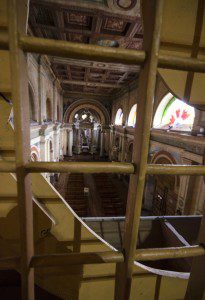 The church itself is only open for an hour or so each Sunday. Otherwise, its doors remain closed. During your museum tour, you will visit the ancient choir stall and it is possible to look through a large metal grate down into the church itself. Photography is not allowed and the few pictures I was able to take were with permission of the guide specifically for this article. No items could be photographed individually, only views of entire rooms.
The church itself is only open for an hour or so each Sunday. Otherwise, its doors remain closed. During your museum tour, you will visit the ancient choir stall and it is possible to look through a large metal grate down into the church itself. Photography is not allowed and the few pictures I was able to take were with permission of the guide specifically for this article. No items could be photographed individually, only views of entire rooms.
If you would care to visit this church, you can find it on the corner of Juan José Flores and Eugenio Espejo, 2 blocks from Plaza Grande. You can request an English-speaking guide if you prefer. The cost of entry is $2.50 for most, though students can enter for $1 and children, handicapped, and senior citizens can enter for a mere 60 cents. The museum is open from 9am until 5pm Monday thru Friday and from 9am until 12pm on Saturdays.
[ready_google_map id=’19’]


